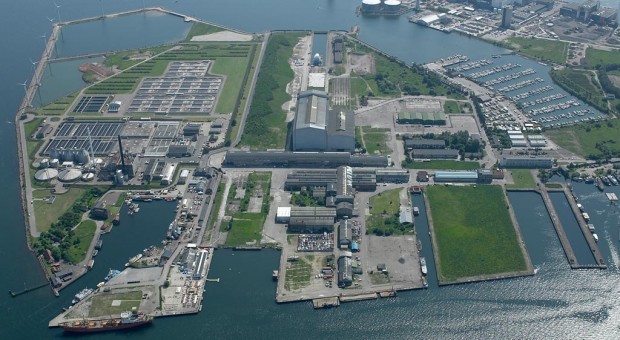- Refshaleoen Potential, Copenhagen
Refshaleoen Potential, Copenhagen

Copenhagen, Denmark
Michael Singer Studio led a workshop process called The Edge on Refshaleoen Peninsula as a part of the LAND with artist Joachim Hamou and his work with Projekt Landburg at Café Teatret in Copenhagen. The Edge was a public collaborative exploration of the potential of open land on Refshaleoen and how it might be made ‘productive’ in many aspects: environmentally, socially, economically and culturally. Over the 1 week period The Edge engaged well over 500 people and included 4 workshops, site visits, 2 lectures, 15 theater performances, an informal exhibition and numerous informational meetings. The workshops and exhibition were held at the Yard Gallery, which is led by Anette Holmberg on Refshaleoen and included participation of the local tenants on Refshaleoen, students and a wide range of professionals.
The Edge workshop was centered around Michael Singer Studio’s systems based approach which relies on research, analysis, observations, meetings and a creative collaborative process. The critical finding was the number of potential interconnections with adjacent or nearby infrastructural networks. These interconnections could offer the site access to abundant rainwater, heat, CO2, biological waste resources and even access to a methane gas line. The concept developed during The Edge workshop is a system that seeks to harness these interconnections to create a regenerative network on Refshaleoen. While The Edge workshop developed this concept at a small scale for its selected site, Singer Studio was encouraged by a number of parties to develop the concept further for the entire peninsula. This proposal has become known as The Refshaleoen Potential.
The Refshaleoen Potential presents a vision of productive greenhouses scattered throughout Refshaleoen soaking up natural light, harvesting and utilizing rooftop rainwater, consuming recycled compost, harnessing heat from the adjacent water treatment plant and processing CO2 to speed up plant growth while reducing emissions. These greenhouses produce year round fresh produce and cut flowers going to Copenhagen via the harbor on boats and methane gas (from waste) powered transport vehicles. Solar panels and wind turbines could provide additional power for grow lights. Underutilized warehouses could potentially be used for growing mushrooms. Clean brackish water from the harbor could be utilized to farm mussels or oysters while simultaneously cleaning water. The Refshaleoen Potential is based off of the Kalundborg Symbiosis (see here) in Denmark, which is perhaps the world’s best known model for such an eco-industrial complex. In the Kalundborg Symbiosis, public and private enterprises buy and sell residual products originating from one enterprise to become the raw material of another enterprise, benefiting both the economy and the environment. Starting in 1961 the sharing of resources between a few facilities now has 18 different facilities and 30 interconnections. The Refshaleoen Potential is envisioned as a highly visible sister complex to the Kalundborg Symbiosis.
Artists / Designers: Michael Singer and Joachim Hamou
Singer Studio Project Manager and Environmental Planner: Jason Bregman
Project Leadership: Anette Holmberg, Joachim Hamou, Claudia Munkeboe, Else Marie Bukdahl and Oystein Hjort
Kalundborg Symbiosis Website and Graphic Design Credit: www.socialaction.dk
Aerial Photography: Refshaleøens Ejendomsselskab

